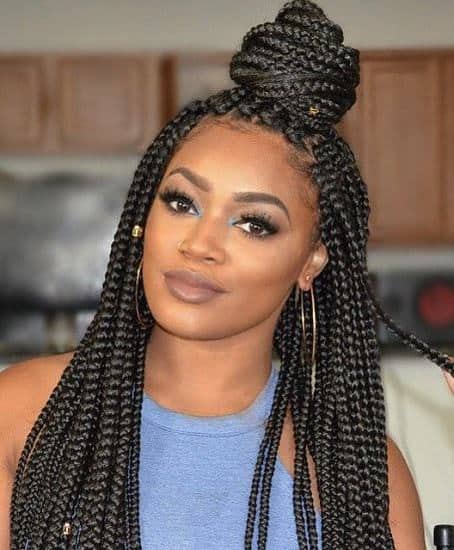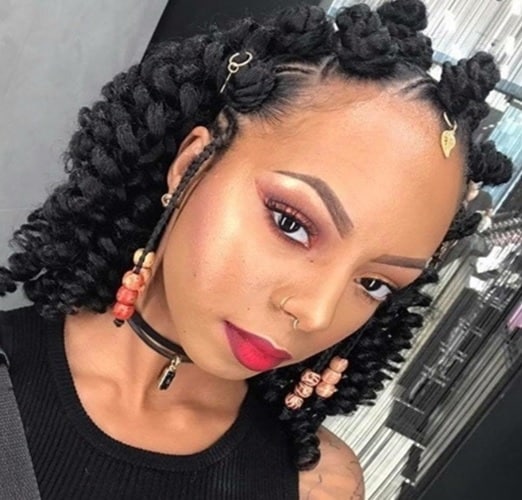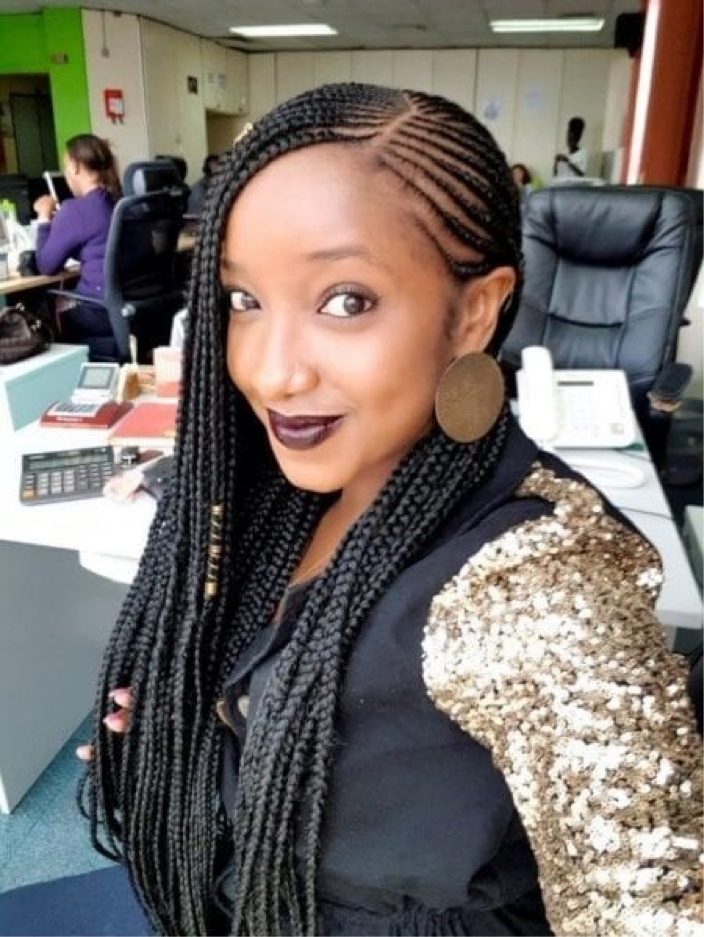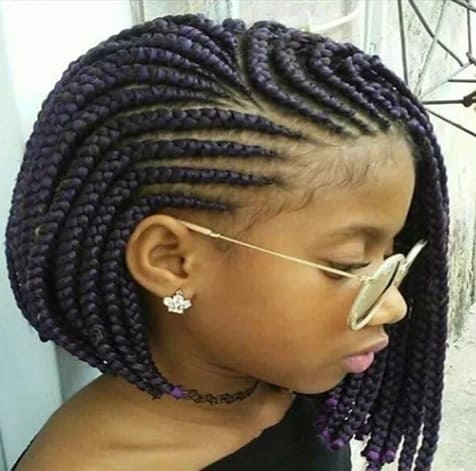New Hairstyles in Kenya: A Comprehensive Exploration of Evolving Trends

The landscape of hair fashion in Kenya is a vibrant and dynamic tapestry, continuously woven with threads of tradition, global influence, and local innovation. Across urban centers and rural communities, hair serves not merely as an aesthetic adornment but as a powerful medium for cultural expression, personal identity, and a reflection of evolving social narratives. The current wave of contemporary hair trends represents a significant shift, embracing versatility, protective styling, and an elevated sense of individual artistry. This exploration delves into the multifaceted aspects of these emerging follicular fashions, examining their origins, characteristics, cultural significance, and the profound impact they exert on individuals and the broader society.
Historically, Kenyan hair traditions were deeply rooted in tribal customs, with styles often signifying age, marital status, social standing, or rites of passage. Braiding, coiling, and intricate adornments with beads and cowrie shells were prevalent. While these traditions continue to hold cultural value, the modern era has introduced an unprecedented blend of indigenous techniques with global aesthetics. The advent of social media, increased exposure to international fashion, and a burgeoning local beauty industry have catalyzed a rapid evolution, leading to a diverse array of styling options that cater to varying preferences, hair types, and lifestyles.
One of the most prominent categories dominating the current hair scene involves braided styles. These are not merely a continuation of age-old practices but sophisticated reinterpretations incorporating advanced techniques and diverse materials. Knotless braids, for instance, have surged in popularity due to their lighter feel, reduced tension on the scalp, and a more natural-looking finish compared to traditional box braids. This innovation minimizes breakage and promotes hair health, a crucial benefit for those seeking protective styling. Variations like Bohemian braids, which incorporate loose, wavy extensions at the ends, offer a softer, more romantic aesthetic, blending the neatness of braids with a free-flowing texture. Similarly, feed-in braids allow for seamless integration of extensions, creating intricate patterns that appear to grow directly from the scalp, often favored for elaborate cornrow designs that can be styled into updos or ponytails. These braided styles celebrate intricate artistry, provide longevity, and offer a canvas for bold color experimentation, ranging from natural tones to vibrant, unconventional hues.
Twist styles also command a significant share of the contemporary hair market, offering a lighter alternative to braids while still providing Short Choppy Hairstyles For Fine Hair An In Depth Analysis Of Volume And Texture Enhancement excellent protection for natural hair. Senegalese twists are characterized by their sleek, rope-like appearance, achieved by twisting two strands of extension hair around natural hair. Havana twists are generally bulkier and have a more textured, natural look, utilizing kinky Havana hair extensions. Spring twists, a more recent innovation, use lightweight, springy extensions to create bouncy, voluminous twists that are incredibly versatile and easy to manage. These twisting techniques are lauded for their ability to seal in moisture, prevent tangles, and facilitate hair growth by reducing daily manipulation. The appeal lies in their elegant simplicity, ease of installation, and often quicker drying time compared to their braided counterparts.
The realm of wigs and weaves has undergone a significant transformation, moving from mere convenience to a statement of luxury and stylistic versatility. The demand for human hair wigs and weaves has skyrocketed, driven by their natural appearance, durability, and ability to be styled, colored, and treated much like natural hair. Lace front wigs and full lace wigs are particularly sought after for their undetectable hairlines, offering a seamless blend with the wearer’s skin and allowing for diverse parting options. The customization trend is strong, with many individuals investing in bespoke units tailored to their head shape and desired style. These options provide an unparalleled ability to experiment with different lengths, textures, and colors without altering one’s natural hair, serving as a powerful tool for self-reinvention and protective styling. The meticulous craftsmanship involved in constructing and installing these units has elevated them to an art form, with skilled stylists capable of achieving incredibly realistic and flattering results.
Parallel to these extension-based trends, the natural hair movement continues to flourish with renewed vigor. This movement emphasizes the celebration and maintenance of indigenous hair textures, promoting healthy hair practices and rejecting chemical relaxers. Contemporary natural styling embraces a variety of looks, from intricately defined wash-and-gos that highlight curl patterns, to elegant updos and protective styles like flat twists, Bantu knots, and chunky braids that can be worn for several days. The focus is on moisture retention, scalp health, and using natural, often locally sourced, products. This embrace of natural hair is deeply intertwined with a broader movement of self-acceptance and cultural pride, asserting a unique aesthetic identity that is both authentic and empowering.
Beyond these dominant categories, short hairstyles have also gained considerable traction, particularly among women. Bold pixie cuts, often with intricate fades or undercuts, represent a chic and low-maintenance option that exudes confidence and modernity. Tapered cuts, asymmetrical bobs, and carefully sculpted short styles offer a refreshing departure from longer hair, highlighting facial features and providing a sophisticated edge. These short hair expressions signify a departure from conventional beauty standards, embracing a minimalist yet impactful aesthetic.
For men, the evolution of hair aesthetics is equally pronounced. Modern fade haircuts, ranging from sharp high fades to subtle low fades, are ubiquitous, often paired with meticulously sculpted beards to create a refined and contemporary look. Dreadlocks continue to be a popular choice, evolving from traditional uniform locks to more free-form, styled, or colored variations. The meticulous grooming involved in maintaining these styles, including regular trims and specialized conditioning, reflects a heightened awareness of personal presentation and a desire for polished sophistication.
The proliferation of these styling paradigms has a significant economic impact, fueling a vibrant beauty industry. Salons, barbershops, and hair product retailers are thriving, creating employment opportunities for stylists, technicians, and entrepreneurs. The demand for high-quality extensions, natural hair care products, and specialized styling tools drives innovation and competition within the market. This economic ecosystem supports countless livelihoods and contributes substantially to the national economy.
Socially, the adoption of these contemporary hair expressions plays a crucial role in shaping individual identity and collective cultural discourse. Hair becomes a canvas for personal narratives, allowing individuals to communicate aspects of their personality, aspirations, and affiliations. The ability to switch between styles, experiment with colors, and embrace different textures fosters a sense of creative freedom and self-determination. These trends also challenge and redefine conventional beauty standards, promoting inclusivity and celebrating the diverse range of African beauty. The confidence derived from a well-executed and personally resonant hairstyle is immeasurable, impacting self-esteem and social interaction.
However, the pursuit of these intricate styles is not without its considerations. Maintenance, particularly for extension-based styles, requires diligent care to ensure longevity and hair health. The cost associated with quality extensions, professional installation, and specialized products can also be substantial, making these styles an What Is Type C Hair investment. Furthermore, the selection of reputable stylists and the use of appropriate techniques are paramount to avoid damage to natural hair.
In conclusion, the current hair trends in Kenya represent a dynamic intersection of heritage, innovation, and personal expression. From advanced braiding techniques and versatile twists to luxurious wigs, celebrated natural hair styles, and sophisticated short cuts for both genders, the options are extensive and deeply resonant. These evolving hair fashions are more than fleeting fads; they are integral to cultural identity, economic growth, and the ongoing narrative of self-actualization. Their continued evolution promises an even richer tapestry of creativity and diversity in the years to come.
FAQs by new hairstyles in Kenya
Q1: What are the primary influences driving hair fashion in Kenya?
A1: The evolution of hair fashion in Kenya is primarily driven by a blend of traditional African styling techniques, global beauty trends disseminated through social media and international media, celebrity culture, and the innovative contributions of local stylists and product developers. Economic factors also play a role, influencing accessibility and demand for certain hair types and services.
Q2: How do these styles contribute to hair health?
A2: Many contemporary styles, particularly braids, twists, and wigs/weaves, are considered protective styles. They minimize daily manipulation of natural hair, reduce exposure to environmental elements, and can aid in moisture retention, thereby promoting hair growth and reducing breakage. Proper installation and maintenance are crucial to maximizing these benefits and preventing potential damage.
Q3: What is the average duration for maintaining these styles?
A3: The longevity of various styles differs significantly. Braids and twists can typically last between 4 to 8 weeks, depending on the specific style, hair texture, and maintenance routine. Wigs can be worn indefinitely with proper care and removal for natural hair maintenance, while weaves generally last 6 to 10 weeks before needing re-installation. Natural hair styles vary widely, from daily refreshed looks to protective styles lasting several days to weeks.
Q4: Are these styles accessible to all hair types?
A4: Most contemporary hair trends are highly adaptable to a wide range of hair textures, particularly those common in African hair types (coily, kinky, curly). Stylists possess techniques to work with various densities and porosities, ensuring that braids, twists, and extensions can be safely and effectively applied. The natural hair movement, by definition, celebrates and provides styling solutions for all natural hair textures.
Q5: What are the common misconceptions regarding contemporary hair trends?
A5: A common misconception is that protective styles inherently cause hair damage; however, damage typically arises from improper installation, excessive tension, lack of proper scalp care, or prolonged wear without breaks. Another misconception is that natural hair is difficult to manage, when in fact, with the right products and techniques, it can be incredibly versatile and healthy. There is also a misconception that certain styles are unprofessional, a notion that is increasingly being challenged and dismantled in modern professional environments.
Tips by new hairstyles in Kenya
- Prioritize Scalp Health: Regardless of the chosen style, maintaining a clean, moisturized, and healthy scalp is paramount. Regular cleansing, gentle massage, and the application of nourishing oils or serums can prevent itching, flaking, and promote overall hair vitality.
- Research Reputable Stylists: The skill of the stylist significantly impacts the outcome and health implications of any style. Thorough research, including reviewing portfolios and client testimonials, is advised to ensure professional expertise and adherence to safe styling practices.
- Invest in Quality Products: Utilizing high-quality hair care products formulated for specific hair types and styles contributes to longevity, appearance, and hair health. This includes shampoos, conditioners, moisturizers, and styling aids designed for natural hair or extensions.
- Understand Maintenance Requirements: Each style necessitates specific maintenance routines. Familiarization with these requirements, such as how to cleanse, moisturize, and preserve 1A Hair Style Men A Comprehensive Guide To Managing And Styling Straight Fine Hair the style, is crucial for extending its lifespan and maintaining its aesthetic appeal.
- Consider Hair Type and Lifestyle: The selection of a style should align with an individual’s natural hair texture, lifestyle, and time availability for maintenance. Choosing a style that complements these factors ensures comfort, practicality, and sustained satisfaction.
Conclusion by new hairstyles in Kenya
The current epoch of hair fashion in Kenya is characterized by remarkable innovation, adaptability, and a profound celebration of identity. The evolution of hair aesthetics from traditional roots to sophisticated contemporary expressions underscores a dynamic cultural shift. These emerging styles, encompassing intricate braids, versatile twists, luxurious wigs, celebrated natural looks, and modern short cuts, are more than transient trends; they are powerful statements of self-expression, cultural pride, and economic vitality. The emphasis on protective styling and healthy hair practices within these trends highlights a growing consciousness towards holistic well-being. The continuous interplay between heritage and global influence ensures that the landscape of hair artistry will remain vibrant, diverse, and deeply reflective of the evolving aspirations of Kenyan society.







More suggestion: Valerie Bertinelli Hairstyles With Bangs A Timeless Exploration Of Style And Adaptability